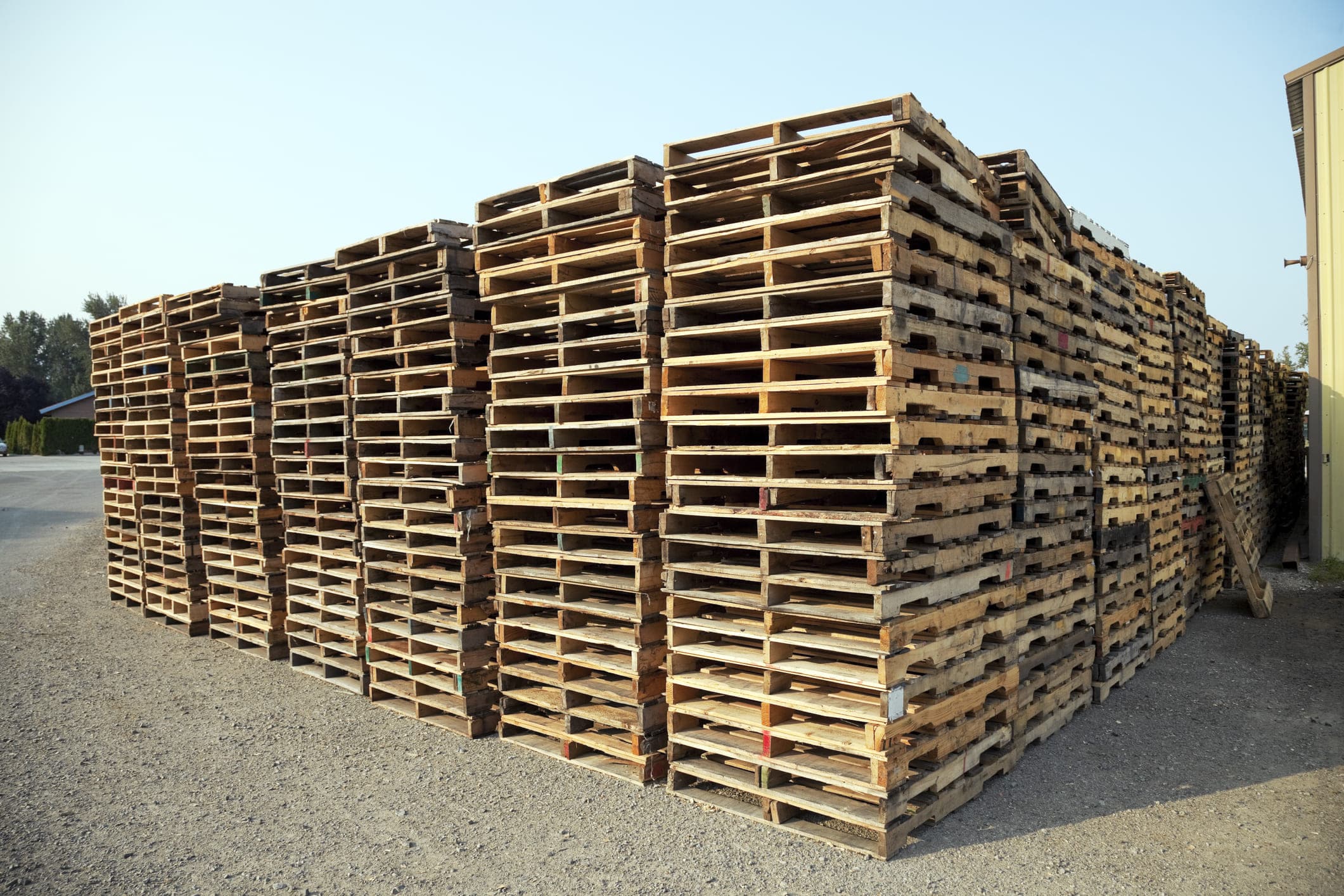Blogs
Sustainable Practices in Timber Packaging Industry: Paving the Way for a Greener Future
Introduction

The manufacturing sector is experiencing a profound transformation worldwide. Traditional imagery of smokestacks and assembly lines is fading, making way for a future dominated by smart factories, sustainable methods, and flexible approaches. Cutting-edge technologies are reshaping manufacturing, with Industry 4.0 poised to generate $3.7 trillion in value for manufacturers and suppliers by 2025.
Embracing this shift requires a strategic evolution centred on innovation, sustainability, and adaptability, including the integration of sustainable timber packaging. Numerous pallet companies are promoting the sustainability of their offerings. This trend has sparked a continuing discussion about the superiority of different substrates, including sustainable timber packaging
Consumer product packaging often becomes the focal point for sustainability enhancements, but manufacturers of a lesser-known category of packaging also tout environmental benefits. Both wood and plastic pallet suppliers, representing the two dominant substrates in the market, heavily emphasise their sustainability features, prompting the question of which one truly leads in eco-friendliness.

In contrast to plastics, timber stands out for its sustainability as it is derived from renewable resources, namely trees. Trees, being a replenishable asset, can be harvested, and new ones can be planted in their place, ensuring a continuous supply. Unlike plastics, which contribute to environmental degradation, timber offers a greener alternative due to its renewable nature. Thus, embracing timber for packaging aligns with eco-conscious practices and promotes environmental stewardship.
Crates crafted from responsibly sourced timber have emerged as a promising and increasingly favoured alternative, akin to a beacon of hope breaking through the haze. Indeed, the global market for wood packaging is forecasted to grow steadily at over 5% annually from 2020 to 2024, with an expected substantial increase of nearly USD$16.99 billion during this period.
Timber crates present numerous benefits, rendering them a progressively favoured option for sustainable packaging solutions. Below are the rationales behind their growing popularity:
Renewable and sustainable material
Timber crates offer a notable advantage as they derive from nature's renewable abundance—the majestic tree. In contrast to the non-renewable polymers constituting a substantial portion of plastic packaging, trees can be replanted and regenerated, serving as an enduring wellspring of raw material.
Opting for timber crates aligns with a more intelligent cycle, utilising a renewable resource and diminishing reliance on landfills, thus fostering a greener supply chain.
Circular economy
A compelling feature of timber crates lies in their potential contribution to a circular economy—an approach that emphasises resource reuse and recycling to minimise waste.
Upon reaching the end of their lifecycle, wooden crates can be recycled or repurposed, ensuring the retention of raw materials within the production cycle. This closed-loop methodology conserves natural resources, diminishes waste generation, and fosters a more sustainable and effective material utilisation.
Reusable and durable
In contrast to single-use packaging materials, timber packaging such as standard cases or pallets are engineered for enduring durability. They can undergo multiple uses, reducing waste and fostering a more sustainable packaging regimen.
This prolonged lifespan mitigates the need for frequent replacements, lessening the strain on Earth's finite resources and curbing the generation of excessive waste. With proper maintenance, these timber crates can evolve into enduring investments for businesses committed to pursuing sustainable practices.
The packaging sector is in a state of continual evolution, pioneering fresh approaches to meet the needs of a planet increasingly focused on sustainability. Within this landscape, numerous advancements are enhancing the sustainability of wooden packaging, benefitting both the environment and operational effectiveness for businesses. Delving into these developments, we'll uncover their profound influence on the future trajectory of this dynamic industry.
Timber packaging industries are increasingly adopting innovative sustainable practices to address environmental concerns and meet consumer demand for eco-friendly solutions. Sustainable harvesting techniques, such as selective logging and reforestation efforts, prioritise the long-term health of forests while minimising ecological disruption.
Additionally, the incorporation of recycled materials and the implementation of waste reduction strategies contribute to the eco-friendliness of timber packaging production. These practices not only reduce reliance on virgin resources but also mitigate waste generation, promoting circular economy principles within the industry.

The timber pallets sustainability sector has encountered numerous obstacles, influencing its effectiveness and financial viability. Ranging from environmental mandates to shortages in labour, this industry has undergone significant adaptations to sustain its competitiveness. These hurdles have influenced various facets of the timber supply chain, encompassing harvesting, processing, and transportation.
Here are the key issues timber industry faces that necessitate careful consideration and strategic action:
Competition from Alternative Materials:
The timber sector faces competition from alternative materials like steel, concrete, and plastic, which offer distinct advantages for specific applications like high-rise construction. To stay competitive, the timber industry has innovated with products like cross-laminated timber to match these materials' properties.
Environmental Regulations:
Increasing environmental regulations have constrained timber harvesting, limiting areas accessible and machinery use. For instance, in the Pacific Northwest, the Endangered Species Act's protection of the Northern Spotted Owl habitat has prompted the timber industry to adjust harvesting techniques to minimise impacts.
Market Volatility:
Timber's profitability is vulnerable to market fluctuations tied closely to the construction industry's health, which in turn responds to economic conditions. The 2008 housing market crash significantly reduced demand for timber products, illustrating the industry's susceptibility to broader economic shifts.
According to Natasa Sikman, Acting Chief Executive Officer of the Australian Forest Products Association (AFPA), Australia's sustainable native and plantation forest industries offer a vital solution for creating renewable everyday products, ranging from grocery bags to coffee cups. As the global community aims to phase out detrimental plastic products, these industries serve as the cornerstone for green packaging solutions.
Sikman emphasised the necessity of maintaining sustainable native forest industries while advocating for the planting of one billion new timber production trees to meet future demand. Without robust and sustainable timber and fibre supplies, the transition away from harmful plastics will pose significant challenges. This assertion was underscored in a report by Mirage News in June 2023, "World Relies on Sustainable Aussie Timber for Solution to Environmental Challenges."
As the global community intensifies efforts to phase out harmful plastic products, these industries emerge as pivotal players in offering green packaging solutions. Sikman's advocacy extends to emphasising the importance of maintaining sustainable native forest industries and planting one billion new timber production trees to meet escalating demand. Such initiatives are not only essential for environmental sustainability but also for bolstering the timber packaging industry's resilience and competitiveness.
The adoption of sustainable practices in timber packaging yields numerous benefits, both economically and environmentally. From a financial perspective, reducing waste and optimising resource usage result in cost savings over the long term.
Embracing sustainability enhances brand reputation and customer loyalty, as consumers increasingly prioritise environmentally responsible products and packaging. The widespread use of wooden export crates stems from their numerous benefits.
Here are perks of employing wooden shipping crates comprise:
- Export packaging made of wood is usually cost-efficient.
- They utilise natural materials in their fabrication.
- Crates crafted from timber can ensure adequate security.
- Timber packaging is both recyclable and biodegradable.
- Companies can extensively tailor crates to accommodate particular products or uses.
- Wooden shipping crates offer superior strength and durability.
- Export wooden crates allow for some level of reusability.
The Sustainable Timber Packaging market, as reported by, Infinity Business Insights is experiencing consistent growth, driven by the rising need for eco-conscious packaging solutions across diverse sectors such as food & beverage, pharmaceuticals, and consumer goods.
Timber packaging emerges as a compelling choice, offering eco-friendly, renewable, and cost-effective alternatives to conventional materials like plastic and metal. This trend is buoyed by increasingly stringent regulations favouring sustainable practices and a heightened consumer awareness regarding environmental conservation.
Major industry players are channelling investments into research and development endeavours aimed at augmenting the strength, durability, and recyclability of timber packaging solutions. Collaborations and strategic partnerships further accelerate market expansion on a global scale.
Conducting thorough market research is imperative in understanding the demand dynamics for Sustainable Timber Packaging. This entails delving into industry reports, conducting supplier interviews, and administering customer surveys to gauge market requirements accurately. A comprehensive analysis of supply chain intricacies and regulatory frameworks is essential for discerning market trends.
Exploring sustainable sourcing practices and aligning with customer preferences for eco-friendly materials are crucial strategies for staying competitive in the Sustainable Timber Packaging market. Leveraging data analytics tools facilitates the prediction of market trends, enabling informed and strategic decision-making processes.
The sustainable timber packaging sector presents promising opportunities amid a burgeoning demand for environmentally sustainable packaging solutions. By leveraging eco-friendly alternatives and adhering to stringent regulations, businesses can carve out a niche in this rapidly evolving market landscape. Embracing collaborative endeavours and harnessing the power of data analytics will be pivotal in driving growth and maintaining competitiveness in the sustainable timber packaging market.
Sustainability in the timber packaging industry is paramount for environmental preservation and long-term viability. Embracing sustainable practices not only reduces the carbon footprint but also ensures the replenishment of natural resources for future generations. By adopting sustainable timber packaging, businesses contribute to mitigating deforestation and promoting a circular economy.
Moreover, it enhances brand reputation and consumer loyalty, aligning with the growing demand for eco-friendly products. Encouraging businesses to prioritise sustainability fosters a greener supply chain and promotes responsible stewardship of our planet's resources, ultimately leading to a healthier environment and a more sustainable future for all.




